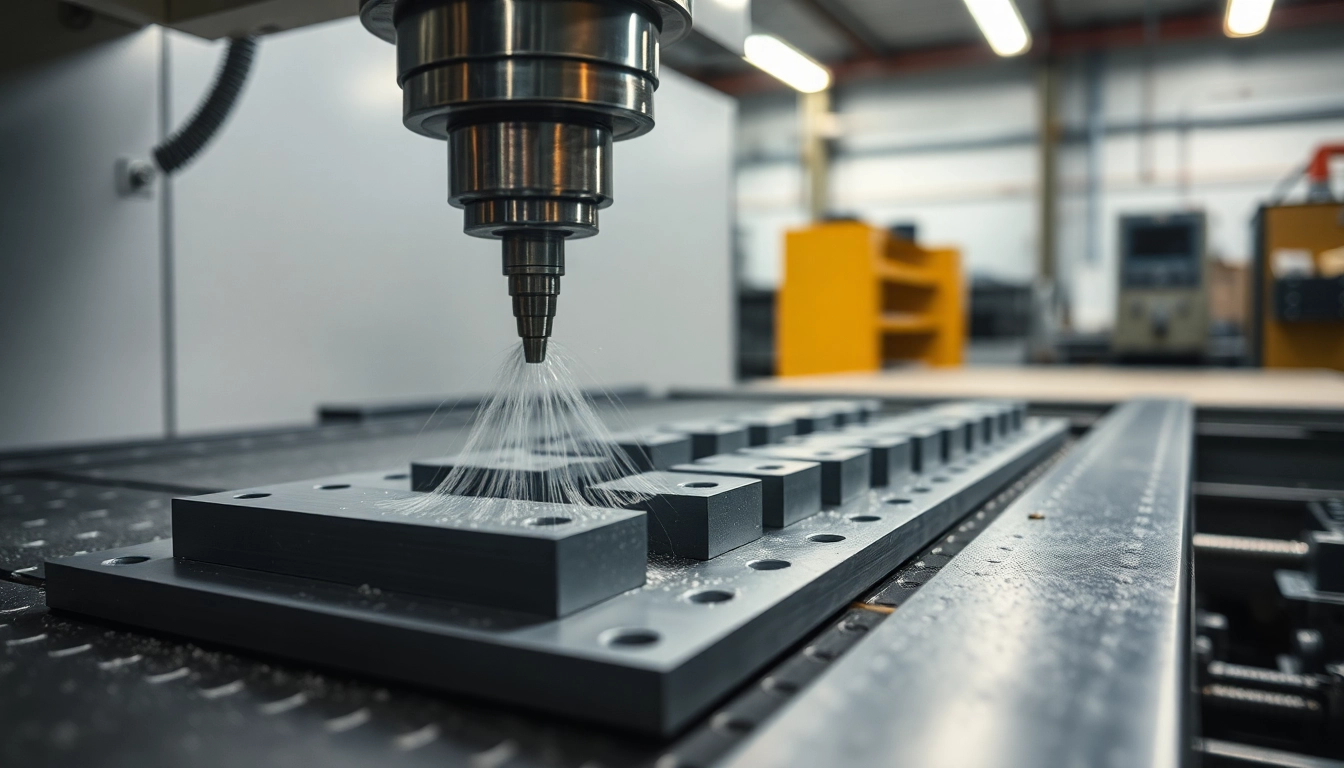Understanding Telehandler Rental: Key Features and Benefits
In the fast-paced world of construction, agriculture, and industrial logistics, having access to versatile heavy machinery is critical to maintaining efficiency and project timelines. Among the most valuable assets in material handling is the telehandler, also known as a telescopic handler. The convenience and flexibility of telehandler rental have revolutionized how companies approach complex lifting tasks, offering an economical alternative to purchasing equipment outright. This comprehensive guide aims to equip you with an in-depth understanding of telehandler rentals—from types and advantages to choosing the right machine, safe operational practices, and optimizing cost-effectiveness. Whether you’re managing a construction site, agricultural operation, or industrial project, mastering telehandler rental can significantly impact your project’s success.
Types of Telehandlers Available for Rent
Overview of Telehandler Varieties
The rental market offers a broad spectrum of telehandlers designed to meet diverse operational needs. Understanding these types is crucial for selecting the right equipment for your specific project requirements.
Standard Telehandlers
These are the most common models, characterized by their telescopic boom and robust design. They are typically used for lifting heavy loads at various heights across construction sites and industrial settings. Standard telehandlers often feature maximum lift heights ranging from 4 meters up to 20 meters, with load capacities varying from 1,500 kg to over 3,500 kg. Their versatility allows multi-purpose use, from stacking pallets to handling construction materials.
Mini or Compact Telehandlers
Ideal for confined spaces or projects requiring precise maneuvering, mini telehandlers usually have a maximum lift height of around 4 to 6 meters and lower load capacities, generally under 1,500 kg. These machines are perfect for indoor applications, urban construction, or agricultural tasks where space is limited. Their increased maneuverability and lower ground pressure make them suitable for delicate terrain or indoor environments.
Heavy-Duty Telehandlers
Designed for large-scale projects, these models feature extended reach capabilities exceeding 30 meters and massive load capacities up to 4,000 kg or more. Heavy-duty telehandlers are typically used in large infrastructure projects, port operations, or industrial manufacturing where high reach and lifting power are mandatory.
Specialized Telehandlers with Attachments
Some rental providers offer models equipped with specialized attachments—such as briquette grab, muck fork, or work platforms—extending their functional scope. These are invaluable for niche applications like fire fighting (water or foam booms), or complex industrial maintenance tasks.
Factors to Consider When Selecting a Telehandler Type
- Project height requirements
- Load weight and stability considerations
- Environmental constraints (indoor vs. outdoor, confined spaces)
- Terrain and surface conditions
- Availability of suitable attachments
Advantages of Renting vs. Buying Telehandlers
Cost-Effectiveness and Flexibility
One of the primary benefits of opting for telehandler rental is comparative cost savings. Purchasing a telehandler involves significant capital expenditure, ongoing maintenance costs, and depreciation. Renting transforms these fixed costs into manageable operational expenses, enabling budget flexibility and financial agility. Additionally, rental agreements often include maintenance, reducing downtime and repair expenses.
Access to Latest Technology and Models
Rental providers regularly update their fleets, offering access to modern, technologically advanced telehandlers with improved safety features, fuel efficiency, and operational performance. Renting allows you to leverage the latest innovations without the need for capital investment or concerns about obsolescence.
Operational Versatility and Scalability
Rental agreements provide the flexibility to scale equipment up or down based on project needs. During peak periods, additional machines can be rented, and during quieter phases, equipment can be returned, avoiding underutilization and storage costs associated with ownership.
Reduced Maintenance and Storage Burdens
Rental companies typically handle routine maintenance, safety inspections, and repairs, allowing your team to focus on core operations. Moreover, equipment storage and security are no longer your concern, especially valuable for companies without extensive yard facilities.
Risk Management
Owning equipment exposes your business to market risks like equipment obsolescence or sudden operational failure. Renting shifts this risk to the rental provider, who maintains, insures, and upgrades the machinery.
When to Opt for Purchase?
While rentals offer numerous advantages, ownership may be justified for companies with ongoing, high-volume use or specialized needs that require dedicated equipment. For instance, large fleets with continuous operation might find ownership more cost-effective in the long run.
How to Choose the Right Telehandler for Your Project
Assessing Your Project Requirements
Begin by analyzing your project scope and operational needs. Key parameters include maximum lifting height, load weight, workspace constraints, and terrain conditions. Documenting these criteria ensures precise matching with available telehandler models, avoiding over- or under-utilization.
Understanding Machine Specifications
Pay close attention to lift capacity, reach, chassis stability, and power source (diesel, electric, or hybrid). For example, construction projects often require high reach models with substantial load capacity, whereas indoor logistics may benefit from compact electric models.
Considering Attachments and Compatibility
Evaluate the availability and compatibility of attachments like forks, buckets, or work platforms, as they enhance operational versatility. Ensure the rental provider can supply or facilitate the installation of relevant attachments.
Analyzing Rental Terms & Service Support
Compare rental durations, delivery, and pickup options, along with their support services. Reliable providers offer comprehensive support, operator training, and prompt maintenance, which are critical for minimizing operational downtime.
Assessing Cost and Budget Compatibility
Obtain quotes for different models and rental periods, factoring in delivery costs, insurance, and potential extra fees. A detailed cost analysis helps in making informed decisions aligned with project budgets.
Expert Tips for Selecting Equipment
- Prioritize safety features such as overload alarms and stabilizers.
- Consider the availability of local support and parts.
- Review customer feedback and test reports for performance reliability.
- Check for certification and compliance with safety standards.
Step-by-Step Guide to Renting a Telehandler
Assessing Your Project Requirements
Start with a comprehensive needs assessment. Identify the scope, timeline, and specific tasks that require lifting and material handling. Carefully determine load capacities and height requirements so you can narrow down suitable models. Create a checklist to compare models and rental packages provided by different providers.
Finding Trusted Telehandler Rental Providers in the UK
Build a shortlist of reputable rental companies with proven experience and strong customer reviews. Use online platforms, industry directories, and referrals to identify providers who maintain well-maintained fleets and offer comprehensive support. Key considerations include proximity, availability, rental terms, and after-sales service.
Booking and Delivery: What You Need to Know
Once you’ve selected a provider, confirm availability, rental duration, and delivery logistics. Discuss site access requirements, delivery windows, and setup procedures. Clarify responsibilities regarding loading, unloading, and operator training if included. Some providers, like Speedy Hire or Brandon Hire Station, offer guaranteed delivery times and flexible rental terms for added convenience.
Planning for Operator Training & Safety
If your team is unfamiliar with telehandler operation, arrange for certified training sessions. Proper training reduces the risk of accidents, ensures compliance with safety standards, and maximizes operational efficiency. Many rental providers include or facilitate operator training as part of the rental package.
Inspecting Equipment Prior to Use
Inspect the telehandler upon delivery for any damage or operational issues. Document existing conditions to prevent disputes at return. Ensure safety features are functional and that the operator understands the machine’s controls and safety protocols.
Optimizing Usage & Return
Use the telehandler efficiently by scheduling tasks to prevent unnecessary equipment idle time. Maintain a record of operational hours, maintenance checks, and any issues encountered. At the end of the rental period, ensure the equipment is returned in accordance with the provider’s conditions to avoid additional charges.
Best Practices for Safe and Efficient Telehandler Use
Operator Training and Certification
Operator competence is central to safety and efficiency. Ensure all operators hold valid certificates and have received instruction specific to the rental machine. Continuous training should cover common operational hazards, handling techniques, and emergency procedures.
Loading, Lifting, and Operational Safety Tips
- Always assess ground conditions for stability before lifting.
- Do not exceed the rated load capacity or height limits.
- Use appropriate attachments and ensure they are properly secured.
- Maintain clear communication with ground personnel.
- Keep within the machine’s operational envelope and avoid sudden movements.
- Use outriggers and stabilizers wherever applicable.
Routine Maintenance and Inspection
Perform daily pre-use inspections, focusing on tires, hydraulics, safety devices, and controls. Regularly scheduled maintenance, recommended by the manufacturer, extends the lifespan of the machine and prevents costly breakdowns. Rental companies typically ensure machines are serviced and in top condition before deployment, but ongoing inspections remain vital.
Emergency Procedures and Risk Management
Establish clear protocols for emergencies such as machine failure, accidents, or power outages. Keep emergency contact numbers accessible and ensure operators know how to shut down the equipment safely. Proper signage and safety barriers protect personnel during operations.
Cost Considerations and Budgeting for Telehandler Rentals
Understanding Rental Rates
Rental costs vary based on model specifications, rental duration, and provider policies. Typically, daily rates range from £100 to £400, weekly rates from £500 to over £2,000, and long-term rentals (monthly) may benefit from discounts. For instance, a 4-meter mini telehandler may cost around £130 per day, while larger models exceeding 20 meters could be significantly more. Always request detailed rate sheets and clarify inclusions such as delivery, operator training, and insurance.
Additional Fees and Insurance
Factor in potential additional costs like delivery and pickup charges, fuel, attachments, and insurance coverage. Many rental providers offer comprehensive insurance packages that cover accidental damage, theft, and third-party liability. Carefully review terms to understand coverage limits and deductibles.
Maximizing ROI from Your Rental Investment
Plan your rental usage to maximize productivity. Schedule tasks efficiently to reduce machine idle time. Invest in operator training to improve handling and safety, minimizing downtime and repair costs. Maintain accurate logs for operational hours and service schedules. Additionally, consider long-term rental agreements for ongoing projects, which often include discounts and priority service.
Comparative Cost Analysis
Compare quotes across several providers, considering not only rates but also support services, equipment specifications, and reputation. Use a detailed spreadsheet to analyze total costs, including hidden fees or charges, ensuring cost transparency and value for money.
Case Studies: Successful Telehandler Rental Applications
Construction Site Material Handling
One major construction company successfully utilized telehandler rentals to streamline the transportation of bricks, steel beams, and other heavy materials across a large site. By deploying a fleet of telehandlers with different reach capabilities, they reduced material transport times by 35%, resulting in faster project completion and cost savings. Regular operator training and maintenance contributed to zero accidents during operation, exemplifying best practices in safety and efficiency.
Agricultural Operations and Rural Projects
In agricultural settings, rental telehandlers facilitated tasks such as feed delivery, hay Bale stacking, and equipment maintenance. Mini telehandlers operated indoors or on sensitive land minimized soil disturbance, while the ability to quickly switch attachments enhanced operational versatility. This approach led to a 20% increase in productivity while significantly reducing equipment costs compared to purchase and ownership.
Industrial Maintenance and Repair Tasks
Industrial plants often require high-reach telehandlers for equipment repairs and maintenance in hard-to-access areas. Renting specialized models equipped with work platforms enabled technicians to perform tasks safely and efficiently, reducing downtime and third-party contractor costs by 25%. The use of modern telehandlers with safety features minimized risk during complex operations.



